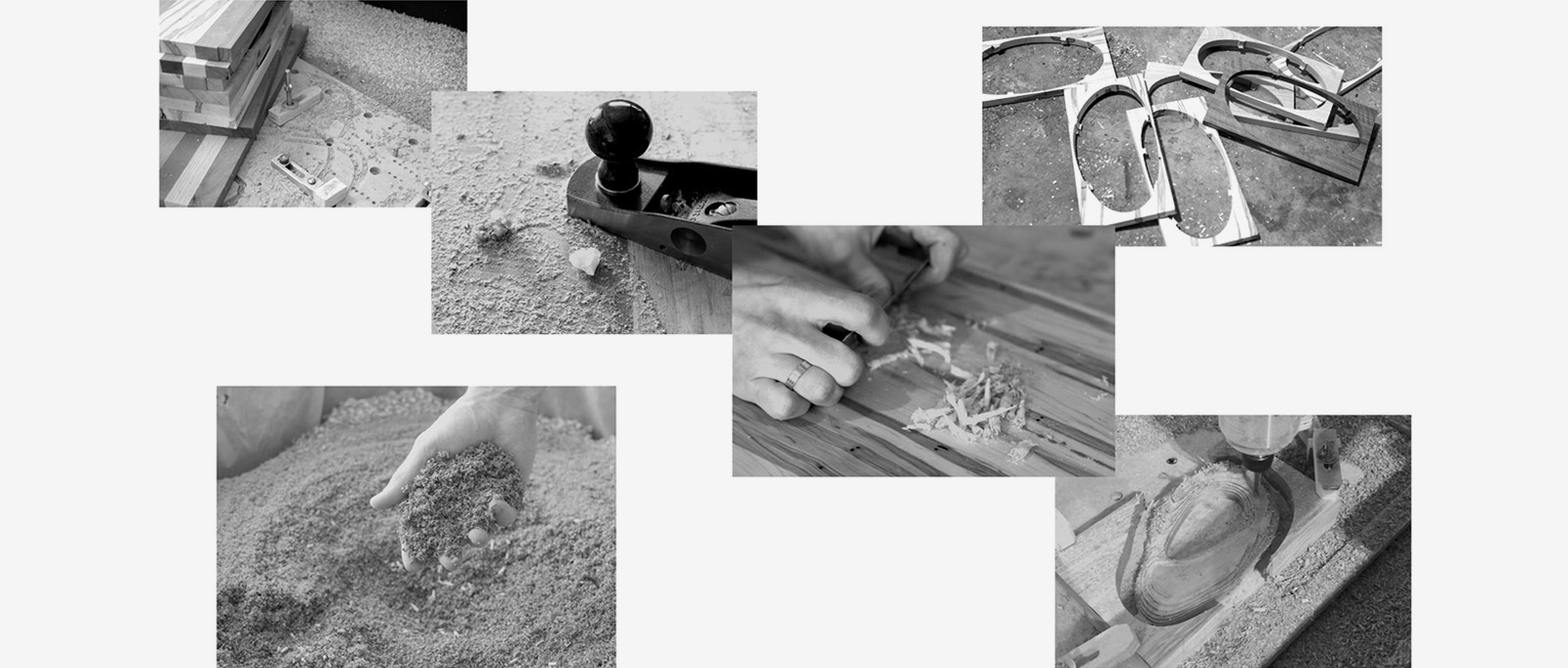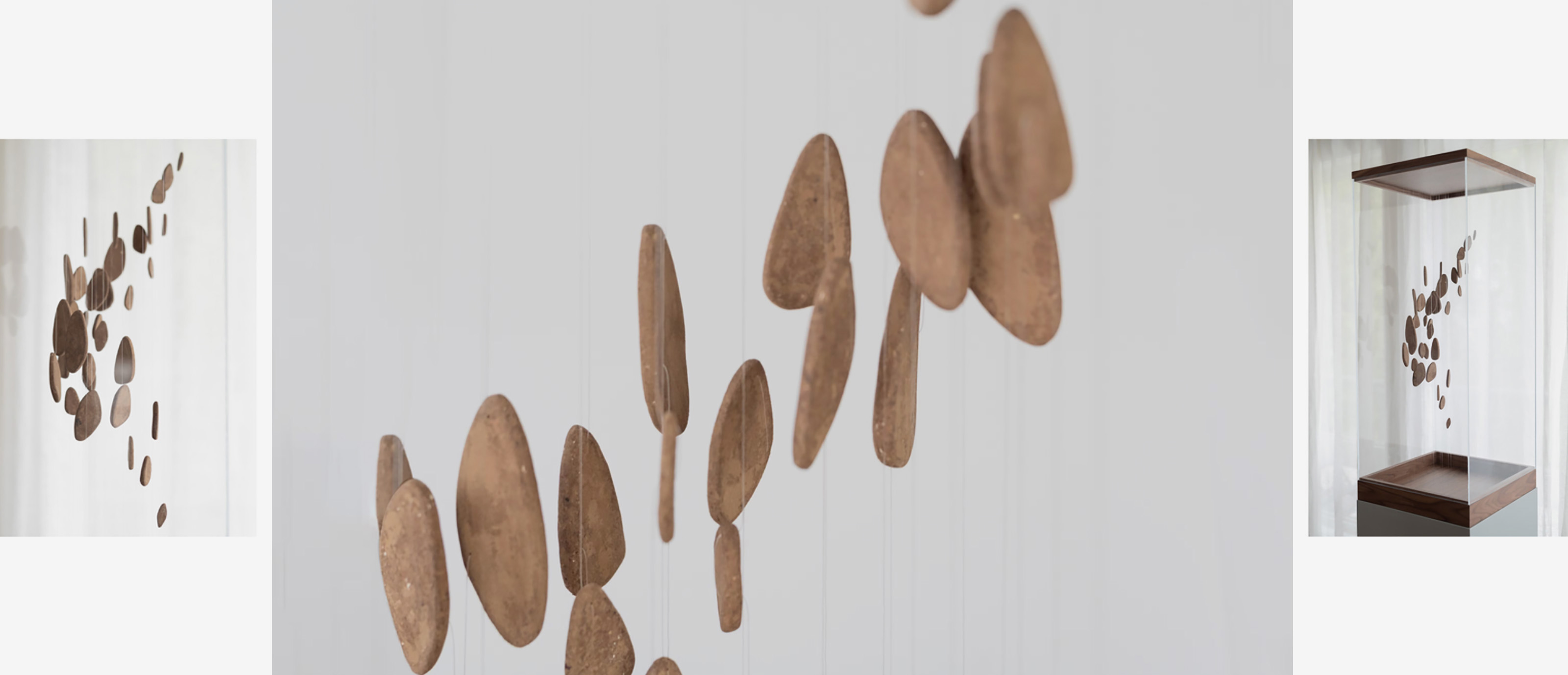Research • Installation • Strategy • Education

The woodworking industry faces a significant challenge with wood waste, particularly sawdust, which often ends up in landfills, contributing to environmental pollution. This case study highlights the innovative approach that I embarked on with Studio Alma to repurpose sawdust into a versatile and visually appealing bio-material, aiming to reduce environmental impact and transform the perception of wood waste into a valuable resource.
Problem identification
The woodworking industry generates approximately 50 million tonnes of wood waste annually, with a significant portion ending up in landfills. Traditional manufacturing processes contribute to this waste growth, leading to environmental pollution and greenhouse gas emissions. Additionally, small and individual businesses face challenges in repurposing sawdust, as its usage is limited, and efficient sawdust management requires substantial time and effort.

Our primary and secondary research revealed that repurposing sawdust is challenging for small businesses and individual woodworkers, leading to the emission of greenhouse gases and environmental pollution. Furthermore, a significant percentage of respondents perceive sawdust as waste, with limited knowledge about its potential uses and benefits.

Specifically, 52% of the respondents perceive sawdust as waste, with 68% of respondents are not being related to woodworking. Some express interest in purchasing products made from sawdust-based materials, particularly if they are aesthetically pleasing or offer environmental benefits, while others cite the need for more information or express uncertainty about the potential uses and benefits of sawdust-based products.

Solution
To address the identified problem, we have developed an innovative material from sawdust and a bio-binder. With this material, we aim to offer a sustainable and visually appealing solution. Our material provides a unique and sustainable medium with a premium appearance and clay-like qualities. It is easily moldable and suitable for product design and visual art.
Importantly, the material can be repurposed and composted without harming the environment.

Strategy and business model
Through concept testing and data collection, Studio Alma decided to launch a new line of objects made of its wood remnants. The studio now repurposes sawdust from its workshop, which was considered wood waste before. It brings a sustainable design and art objects alternative to its customers without sacrificing quality and aesthetics.

Additionally, the studio now offers large-scale installations and surface designs made from the newly developed sawdust-based eco-material, effectively repurposing its sawdust into valuable products.

Vision
Our vision is to raise awareness about the transformative potential of wood waste, considering it as a valuable resource that should be used and reused until it can no longer be used. We aim to inspire consumers to make more eco-friendly choices and shift the perception of sustainability from being a challenge to an opportunity.

Mission
The mission of the project is to inspire and empower the community to make eco-friendly choices, educating and encouraging the adoption of sustainable practices. The objective is to demonstrate the ease of repurposing wood waste into valuable resources without the need for breakthrough technology, significant investement, or complex tools.

The process
After a year of research and development, we have successfully turned waste into a versatile and natural sawdust mixture, showcasing the potential to nurture sustainability without the need for expensive technology. The process involved creating the new material, designing a new product line, and creating an installation. All of this was accomplished through a successful interconnection of sustainability, design research, strategy, craftsmanship, experimentation, lab testing, and prototyping.

Results
While working on this project, we used our newly developed sawdust mixture to create an artwork. Thus, we turned waste into value.
This work is a conversation about the perception of waste. It is about breaking stereotypes. It is about prolonging resources. It is about turning unwanted into desirable.

Impact
We hope to inspire others to experiment, even if they feel a lack of knowledge, expertise, resources, or tools. Then, from individuals to communities, industries, to nations, we’ll change the status quo and leave a prospering planet to new generations.

Maria's role in the team: design research, concept design, business strategy and business plan, material design, installation design, communication, team leadership.
